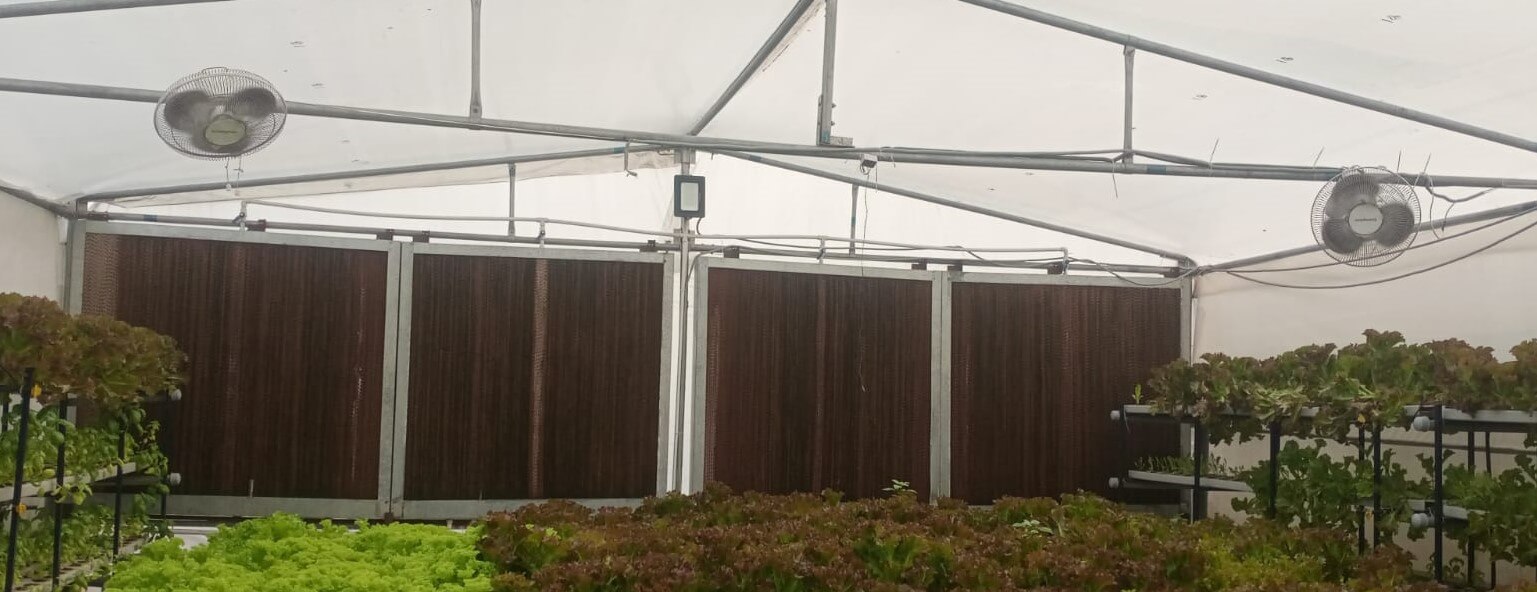Humidity in your polyhouse is an important environmental factor for your plant growth and also very difficult to control. Humidity constantly fluctuates with the changing temperature and continuous transpiration by plants adds water vapour to the air in your polyhouse.
Humidity is the amount of water vapour present in the air, and we generally express it as relative humidity (RH). Relative humidity is the percent of water vapour present in the air in comparison to the total amount of water held by the air if it were saturated.

The Transpiration process and Humidity
Transpiration is the process where plants absorb water from their roots and give off water vapour through pores in their leaves. Transpiration increases if the air is dry or the temperature is high, which increases the chances of wilting of plants.
Humidity affects the opening and closing of stomata, thus affecting transpiration and photosynthesis of plants.
If the humidity is low, then the transpiration of the plant increases and, to minimise the water loss and wilting, the plant closes its stomata, which unfortunately results in a slow photosynthesis process and thus affects plant growth.
If humidity is too high, then the plants do less transpiration. As a result, the plant loses less water and does not take up much water from the growing medium, which results in little uptake of nutrients mixed in water and causes nutrient deficiency.
The Photosynthesis process and humidity
Photosynthesis is a process by which a plant creates its food by using sunlight, water, and carbon dioxide. Humidity affects the opening and closing of stomata, thus affecting the availability of carbon dioxide to plants.
The stomata of plants should be open to allow plants to absorb carbon dioxide for photosynthesis. If the humidity level is normal, stomata open to let in carbon dioxide for active photosynthesis.
If the humidity is low and the air is dry, to prevent wilting of plants, stomatal openings close, which results in less photosynthesis and slower plant growth.

